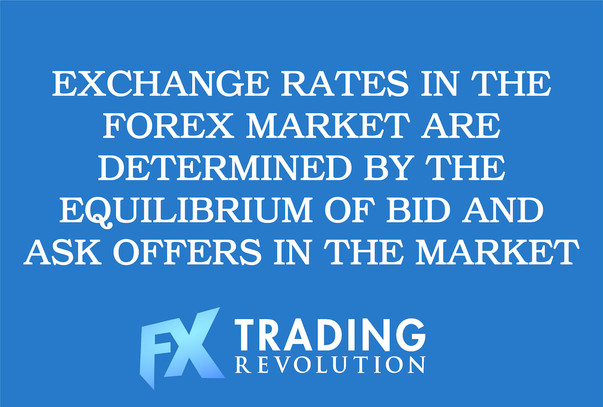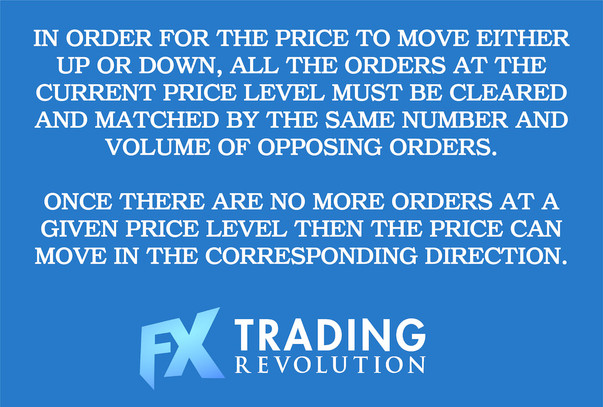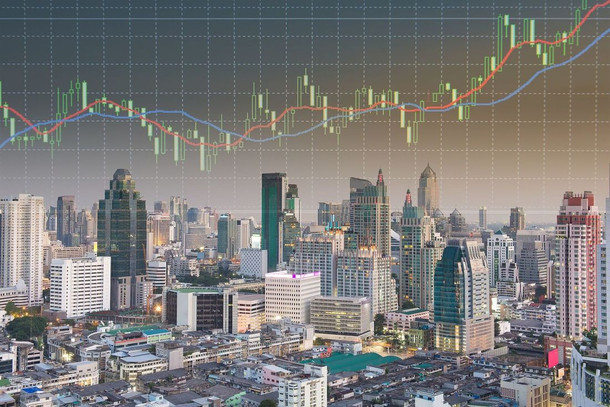The Forex market determines the exchange rates of all the different currencies in the world while in the process it’s causing a wide array of effects and consequences on the economy and lives of the people in those countries.
It can be intriguing and fascinating how those exchange rates are changing so rapidly and very often it seems like they are controlled by someone, most often thought that to be the government or the central bank.
And while indeed, governments and central banks have many shameless instances where they actively intervened in the currency markets, most of the time they prefer to just monitor things without getting actively involved.
So, if governments and central banks do not set the exchange rates in the Forex market by default, then how are the prices determined exactly?
It all goes back to basic free market theory.
Prices in any market, that is exchange rates in the Forex market are determined by the equilibrium of bid and ask offers in the market. Period.
You may wonder, what exactly does that mean?
Let’s start from the bottom and work our way up.
We know that for every currency pair there is a bid and an ask price. The bid price is the price at which we can instantly sell in our trading platforms and the ask price is the price at which we can buy the currency pair live in our trading platforms.
Now, these bid and ask prices themselves are determined by the limit orders that were already sent into the market.

Market participants in Forex send their bid and ask orders (with volume) at which they are ready to buy or sell a particular currency pair.
The current bid and ask prices at any given moment are determined as follows:
The highest price in the order book that someone is willing to buy at is taken as the bid price;
The lowest price recorded in the order book at which someone is willing to sell is taken as the ask price;
To illustrate this point let’s look at an example of the EURUSD currency pair.
Suppose that EURUSD is trading at a price of 1.1578/1.1580 (bid/ask). What this means is that the highest price someone is willing to pay to buy the Euro against the Dollar is 1.1578. Conversely, the lowest price someone is willing to accept to sell the Euro against the Dollar is 1.1580. Thus the current quoted (bid/ask) prices.
Now, the next logical question is what causes the price to move from 1.1580 to 1.1582, for example. You may have also noticed from experience that spreads vary (e.g. the 1.1578/1.1580 (bid/ask) can easily become 1.1576/1.1584 in just seconds).
The answer to both questions lies in the number of lots (or volume) of bid and ask offers that are currently present in the market at each specific price.
In order for the price to move either up or down, all the orders at the current price level must be cleared and matched by the same number and volume of opposing orders. Once there are no more orders at a given price level then the price moves in the corresponding direction.
To take our previous EURUSD example, let’s suppose that there are currently 100 lots of buy orders at 1.1578 and 150 lots of sell orders at 1.1580. That means that someone or multiple parties are willing to buy 100 lots of EURUSD at 1.1578 and on the other end, someone is willing to sell 150 lots of EURUSD at 1.1580.
In order for the price to move up, someone has to buy all the 150 lots that are offered (for selling) at 1.1580, thus clearing all orders at this level. This then causes the price to go to the next price level higher where there are sell orders, for example, let’s say 1.1581. Once all sell orders at 1.1581 are cleared, the price can then move even higher for example, to 1.1582 and so on.
Now, of course, for the sake of simplicity we take larger numbers in this example, but in the Forex market things are much smoother and prices are quoted and move in the 5th decimal point while hundreds of lots are traded at any given point.
Now, let’s look at why gaps are created.
Continuing the previous example, suppose that all sell orders at 1.1580 are taken out and there are no sell orders until 1.1585. It’s only logical then that the next quoted price will be 1.1585 and thus it will create a gap on the chart.
This usually happens during hours of dry market liquidity or rapid price moves during volatile news releases.

So, the main takeaway for the ordinary Forex trader is that a move in the price from 1.1500 to 1.1600 is not at all like a distance or a road that the currency pair needs to walk, rather it’s a list of orders that may or may not be dense enough to have orders at each consecutive price level on the chart.
This basically means that a bullish move of 100 pips may be very hard to materialize at one time (when there are a lot of counter sell orders) but it may be super easy at another time (when there are no or a very small number of counter sell orders).
Furthermore, gaps are always possible and any one of the market players can decide to remove his orders from the market and with that may cause the price to move (or gap in thin markets).
This whole process described above can be best observed by looking at a tick chart rather than the usual timeframe based charts.
Finally, some may wonder “I thought that the news moved the price”.
While it’s true that nearly all price moves in the Forex market are driven by fundamental news events, the reality is that the price fluctuations during and after fundamental releases are only a reaction to them but the news by itself doesn’t cause prices to move.
Instead, large market participants on the interbank market that are buying and selling millions in response to the news releases is what actually moves the price.
Understanding these basic mechanics of how prices are created and why they move is an important part of becoming a successful trader because they illustrate better than anything else the serious risks that are involved in Forex trading.
In addition, this also gives rise to unique trading opportunities that one cannot spot without understanding these principles.





